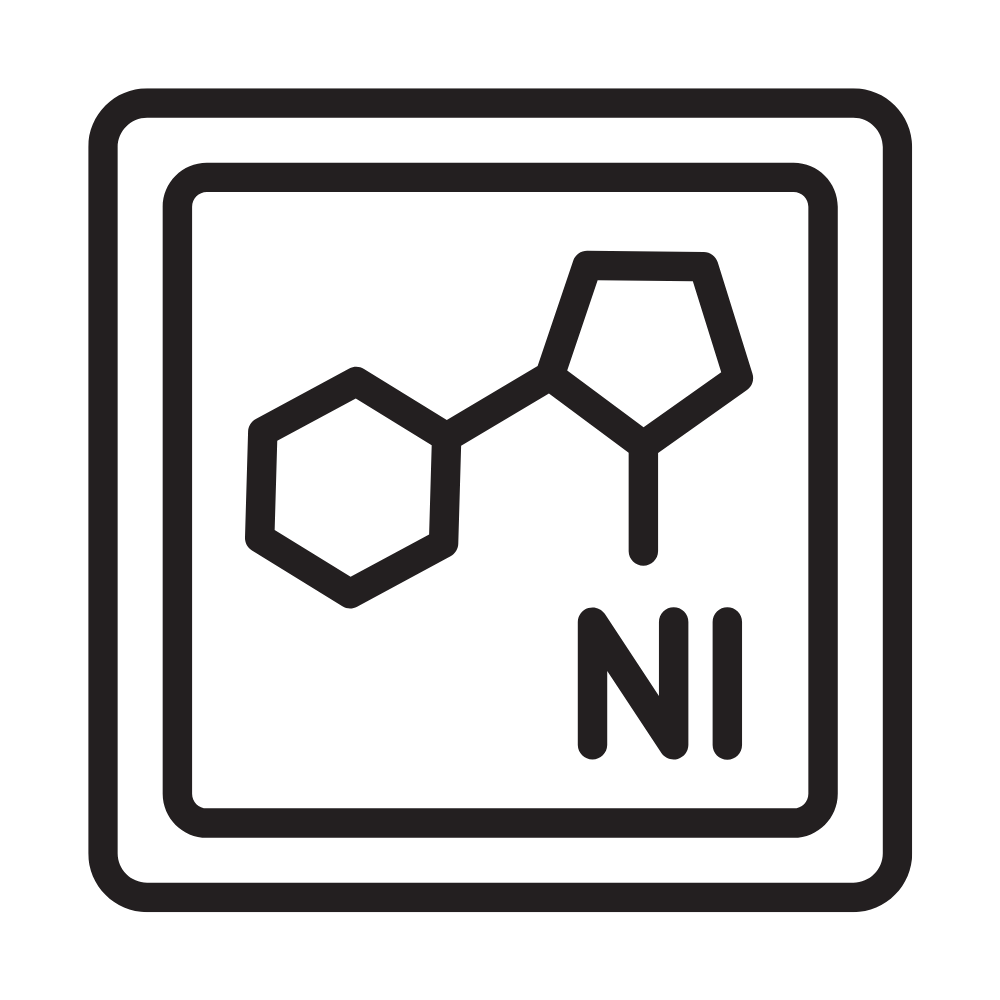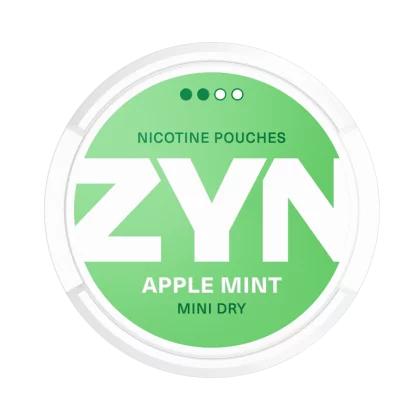Nicotine is a naturally occurring chemical compound that belongs to the class of alkaloids, which are a group of organic compounds that are produced by certain plants and have potent physiological effects on humans and other animals. Nicotine is perhaps best known for its presence in tobacco products such as cigarettes, cigars, and chewing tobacco, but it can also be found in other plants such as eggplants, tomatoes, and potatoes.
Nicotine is an incredibly potent stimulant that has a range of effects on the human body, including increasing heart rate, blood pressure, and alertness, as well as suppressing appetite and reducing stress. However, it is also highly addictive and has been linked to a range of long-term health problems such as cancer, heart disease, and respiratory problems. The reason for this is predominantly due to nicotine’s connection to smoking. When studying the health effects of nicotine, most studies have looked at smokers and the health effects of their smoking habits and drawn conclusions about nicotine. The issue with this is that it doesn’t tell the full story about nicotine since many of the effects that are recorded can be attributed to smoking, not necessarily the nicotine itself.
The ubiquity of nicotine in modern society can be traced back to the widespread use of tobacco products, which have a long and complex history that spans several centuries and continents. Tobacco was first introduced to Europe by explorers in the 16th century, and its use quickly spread across the globe. The use of tobacco was initially associated with wealth and sophistication, but it has since become a major public health concern due to its addictive and harmful properties.
Chemical composition and properties of nicotine
Nicotine is a naturally occurring alkaloid that has a complex chemical structure. It is a nitrogen-containing compound that is derived from the amino acid, ornithine, and is classified as a secondary amine. The chemical formula of nicotine is C10H14N2, and its molecular weight is 162.23 g/mol.

Nicotine has a number of structural features that are responsible for its potent physiological effects on the body. In particular, the molecule has a pyridine ring, which gives it a basic character and makes it capable of forming salts with acids.
Nicotine also has a methyl group and a pyrrolidine ring, which contribute to its lipophilic character and its ability to pass through the blood-brain barrier.
Nicotine is one of many alkaloids that are produced by plants and have physiological effects on humans and other animals. Other well-known alkaloids include caffeine, morphine, and quinine. Despite its similarities to other alkaloids, nicotine is unique in its ability to activate a specific group of receptors in the brain and peripheral nervous system, known as nicotinic acetylcholine receptors (nAChRs).
Physical and chemical properties of nicotine
Nicotine is a colorless to pale yellow liquid that has a characteristic odor and taste. It is highly soluble in water and ethanol, and has a boiling point of 247 °C. The melting point of nicotine is -79 °C, and its density is 1.01 g/cm3.
The physical and chemical properties of nicotine have been extensively studied in the scientific literature, and can be accessed through a range of trusted sources, such as The National Center for Biotechnology Information (NCBI) – this government agency provides a range of scientific information on nicotine, including its physical and chemical properties: https://pubchem.ncbi.nlm.nih.gov/compound/nicotine
Physiological effects of nicotine
Nicotine has a range of physiological effects on the body, many of which are related to its ability to activate nicotinic acetylcholine receptors (nAChRs). These receptors are found throughout the nervous system and are involved in a wide range of functions, including the regulation of heart rate, blood pressure, and respiration, as well as the release of neurotransmitters such as dopamine and serotonin.
When nicotine enters the body, it is rapidly absorbed into the bloodstream and distributed to the brain and other organs. Within seconds, the drug begins to exert its effects on the nervous system, resulting in increased heart rate, blood pressure, and respiratory rate, as well as feelings of alertness and euphoria.
Positive effects of nicotine
Nicotine has been shown to have a number of positive effects on the body, including increasing mental alertness and concentration, reducing anxiety and stress, and suppressing appetite. In fact, many people who use tobacco products report feeling more focused and productive when they are using nicotine.
Negative effects of nicotine
Despite its potential benefits, nicotine is also highly addictive and has been linked to a range of negative health outcomes. But as mentioned earlier, more studies need to be done on nicotine alone as many of the studies that have been carried out have not solely looked at the effect of nicotine on our health. We know that long-term use of cigarettes and other combustible tobacco products has been associated with an increased risk of lung cancer, heart disease, stroke, respiratory problems, and other health issues, but it’s not likely that those effects can be attributed to nicotine. It has been found, however, that nicotine use during pregnancy has been shown to increase the risk of premature birth, low birth weight, and other complications, which is why no nicotine products are recommended for pregnant women.
Sources of nicotine
Nicotine is most commonly consumed through the use of tobacco products, such as cigarettes, cigars, and chewing tobacco. However, it can also be found in other plant-based products, such as certain fruits and vegetables, and is sometimes used as an insecticide. In more recent years, many tobacco-free nicotine alternatives have arrived on the market, including nicotine pouches which have grown tremendously in popularity due to the lower health risks associated with them as they are both free from tobacco and smoke.
Nicotine is a naturally occurring chemical that is found in a variety of plant-based sources, but it is still most commonly consumed through the use of tobacco products. Nicotine can also be found in other products, such as nicotine replacement therapies (NRTs) and electronic cigarettes.
Tobacco products
Tobacco products are the most common source of nicotine consumption, and they include cigarettes, cigars, and chewing tobacco. When tobacco is burned and inhaled, nicotine is released and absorbed into the bloodstream, leading to the characteristic effects of nicotine use.
Nicotine replacement therapies
Nicotine replacement therapies (NRTs) are products that are designed to help people quit smoking by providing a source of nicotine that is not associated with the other harmful chemicals found in tobacco smoke. NRTs include products such as nicotine gum, patches, lozenges, and inhalers.
Electronic cigarettes
Electronic cigarettes, also known as e-cigarettes or vapes, are another source of nicotine that has gained popularity in recent years. E-cigarettes work by heating a liquid that typically contains nicotine, flavorings, and other chemicals, producing an aerosol that is inhaled into the lungs.
Nicotine pouches

Nicotine pouches are a relatively new smokeless tobacco product that has gained popularity in recent years. These pouches are small, discreet, and contain nicotine, providing an alternative to traditional tobacco products like cigarettes and chewing tobacco. Unlike traditional tobacco products, nicotine pouches do not require combustion or any smoke or vapor, making them a safer alternative.
Nicotine pouches are placed under the lip, and the nicotine is absorbed through the mouth’s lining. They come in different flavors, strengths, and sizes, giving users a wide range of options to choose from. Nicotine pouches are generally less harmful than traditional tobacco products since they do not contain tar or produce smoke, reducing the risk of lung cancer, heart disease, and other health issues associated with smoking.
The increased popularity of nicotine pouches is due to their convenience, discreetness, and safety compared to traditional tobacco products. Nicotine pouches provide an easy and convenient way to get a quick dose of nicotine without having to light up a cigarette, which can be beneficial for people who are trying to quit smoking. Additionally, they can be used in situations where smoking is not allowed, making them a more socially acceptable alternative.
Moreover, nicotine pouches have become increasingly popular due to concerns about the health risks associated with traditional tobacco products, including smoking and chewing tobacco. As nicotine pouches do not contain tobacco, they are considered a safer alternative to traditional tobacco products. Many people have switched to nicotine pouches as a way to reduce their exposure to harmful chemicals and minimize their risk of developing tobacco-related illnesses.
The addictive nature of nicotine
Nicotine is known to be highly addictive, and many people who start using tobacco products or other sources of nicotine find it difficult to quit. There are several reasons why nicotine is so addictive, including its effects on the brain and the way that it is delivered to the body.
Effects on the brain
Nicotine acts on the brain by stimulating the release of several neurotransmitters, including dopamine, norepinephrine, and acetylcholine. These neurotransmitters play a role in regulating mood, attention, and other cognitive functions, and their release is associated with feelings of pleasure and reward.
Repeated exposure to nicotine can lead to changes in the brain’s reward system, making it more sensitive to the effects of nicotine and less responsive to other sources of pleasure. This can create a cycle of addiction, where the individual seeks out nicotine to experience the same feelings of pleasure and reward that they used to get from other activities.
Delivery methods
The delivery method of nicotine can also play a role in its addictive nature. When nicotine is delivered through smoking or vaping, it is absorbed into the bloodstream very quickly and can reach the brain within seconds. This rapid delivery of nicotine can create a stronger effect and make it more likely that the individual will continue to seek out nicotine.
In contrast, nicotine replacement therapies (NRTs) such as nicotine gum, patches, or lozenges deliver nicotine more slowly, and in a more controlled manner, which can make it easier for people to gradually reduce their dependence on nicotine.
Withdrawal symptoms
When a person stops using nicotine, they may experience withdrawal symptoms that can make it difficult to quit. These symptoms can include irritability, anxiety, depression, difficulty concentrating, and cravings for nicotine. These symptoms can be very uncomfortable and may lead the individual to seek out nicotine in order to alleviate them.
Cultural and societal views on nicotine
Cultural and societal views on nicotine have varied widely over time and across different regions of the world. In some cultures, nicotine use has been celebrated as a sacred or spiritual practice, while in others it has been stigmatized as a harmful and addictive habit.
Tobacco, one of the most common sources of nicotine, was first cultivated and used by indigenous peoples in the Americas for thousands of years before European contact. Tobacco was used for medicinal and spiritual purposes, and smoking ceremonies were an important part of many indigenous cultures.
When tobacco was introduced to Europe in the 16th century, it was initially used for its medicinal properties and was considered a luxury item. However, over time, tobacco use became more widespread and was eventually associated with a variety of negative health effects.
In the 20th century, many countries began to implement policies and regulations aimed at reducing tobacco use and addressing the health risks associated with nicotine addiction.
Current views and policies
Today, views on nicotine and tobacco use vary widely depending on the cultural and social context. In some countries, smoking is still widely accepted and even encouraged in certain social situations, while in others it is strongly discouraged or even prohibited.
In many countries, there are strict regulations on tobacco advertising and marketing, and efforts are made to educate the public on the health risks associated with smoking. In some cases, these policies have been successful in reducing tobacco use, while in others, tobacco use remains a significant public health concern.
Historically, smoking was once seen as a sign of sophistication and glamour. Cigarette ads featured movie stars and athletes, and smoking was an accepted part of daily life. It wasn’t until the 1960s that medical research began to link smoking with cancer, heart disease, and other serious health problems. As more and more evidence emerged, the cultural view of smoking began to shift. By the 1980s, smoking was no longer seen as glamorous but was increasingly viewed as a negative habit that put both the smoker and those around them at risk.
In recent years, societal views on smoking have continued to evolve. Today, smoking is widely seen as a negative and unhealthy habit, and many countries have implemented laws and regulations to discourage smoking in public spaces. In many cases, smoking is prohibited entirely in enclosed public areas, including workplaces, restaurants, and bars.
At the same time, society is embracing healthier, smoke-free alternatives such as nicotine pouches. Nicotine pouches are a relatively new smokeless tobacco product that has gained popularity in recent years. They are often seen as a safer alternative to traditional tobacco products, as they do not require combustion or produce smoke. Nicotine pouches are also a discreet and convenient way to get a dose of nicotine without having to light up a cigarette.
Many people are turning to nicotine pouches as a way to quit smoking or reduce their exposure to harmful chemicals. They offer a smokeless and tar-free way to get a dose of nicotine, making them a more socially acceptable alternative. Some people also find that nicotine pouches help to reduce stress or improve focus, making them a popular choice for people in high-stress professions or those who work long hours.
Nicotine pouches and alternative methods of nicotine consumption
Nicotine pouches are small pouches filled with nicotine and flavorings that can be placed in the mouth, similar to chewing tobacco. Unlike traditional tobacco products, however, nicotine pouches do not contain tobacco or generate smoke.
Nicotine pouches are a relatively new product and have gained popularity in recent years as an alternative to smoking and other tobacco products. They are generally considered less harmful than smoking, as they do not expose the user to the harmful chemicals and carcinogens found in tobacco smoke.
While these alternative methods of nicotine consumption may be less harmful than smoking or tobacco use, it’s important to note that nicotine itself is still an addictive substance.
Therefore, it’s important for users of these products to be aware of the risks and to use them in moderation. Those who are looking to quit smoking or reduce their nicotine use should also consider working with a healthcare provider or a tobacco cessation program to develop a comprehensive plan for quitting.
Conclusion
Nicotine is a highly addictive substance that can have both short-term and long-term health effects. While many people associate nicotine with tobacco use and smoking, there are a variety of other ways to consume nicotine that do not involve smoking or tobacco use.
Alternative methods of nicotine consumption, such as nicotine pouches and nicotine replacement therapy, are generally considered less harmful than smoking and tobacco use. However, it’s important to note that nicotine itself is still an addictive substance that can have health effects.
Sources
- The National Institute on Drug Abuse (NIDA) – this government agency provides detailed information on the effects of nicotine and tobacco on the body, as well as information on addiction and treatment: https://www.drugabuse.gov/drug-topics/tobacco-nicotine
- The World Health Organization (WHO) – this international organization provides information on the global prevalence of tobacco use and its impact on health, as well as information on tobacco control policies: https://www.who.int/news-room/q-a-detail/tobacco-use-and-nicotine-addiction
- The Centers for Disease Control and Prevention (CDC) – this government agency provides information on the health risks associated with tobacco use and the benefits of quitting, as well as information on tobacco control policies and programs: https://www.cdc.gov/tobacco/index.htm
- The American Cancer Society (ACS) – this non-profit organization provides information on the link between tobacco use and cancer, as well as information on quitting and cancer prevention: https://www.cancer.org/cancer/cancer-causes/tobacco-and-cancer.html
-
ZYN Cool Mint Mini Dry Normal 3mgPrice is hidden
-
VELO Freeze MAXPrice is hidden
-
ZYN Mini Black Cherry 6 mgPrice is hidden
-
ZYN Cool Mint Mini Dry Extra StrongPrice is hidden
-
ZYN Espressino Mini Dry Normal 3mgPrice is hidden
-
Zafari Desert Mint 4mgPrice is hidden
-
VELO Ice Cool Mint Strong SlimPrice is hidden
-
ZYN Apple Mint Mini Dry 3mgPrice is hidden
-
ZYN Citrus Mini Dry Normal 3mgPrice is hidden















